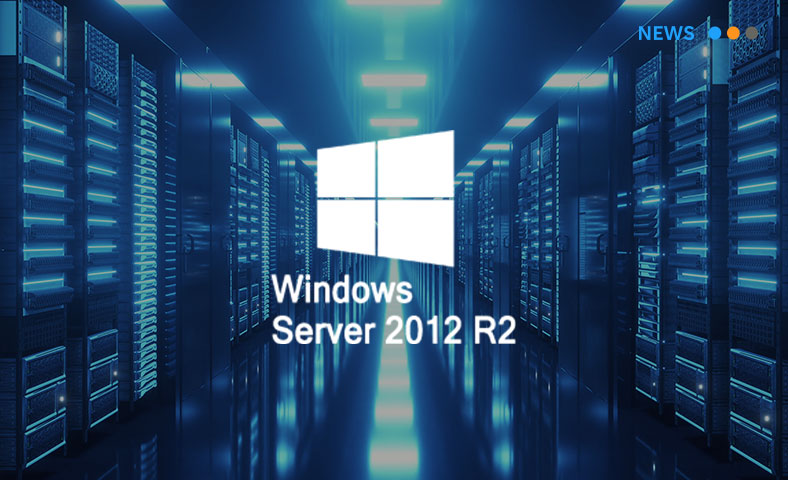Adobe, Microsoft y SAP quieren impulsar una nueva generación de experiencias de cliente
September 28, 2018myCloudDoor at GITEX 2018 in Dubai
October 4, 2018Simply put, cloud computing is the delivery of computing services—servers, storage, databases, networking, software, analytics, intelligence and more—over the Internet (“the cloud”) to offer faster innovation, flexible resources, and economies of scale. You typically pay only for cloud services you use, helping lower your operating costs, run your infrastructure more efficiently, and scale as your business needs change.
Top benefits of cloud computing
Cloud computing is a big shift from the traditional way businesses think about IT resources. Here are seven common reasons organizations are turning to cloud computing services:
[vc_row]
[vc_column width=”1/2″]
Cost
Cloud computing eliminates the capital expense of buying hardware and software and setting up and running on-site datacenters—the racks of servers, the round-the-clock electricity for power and cooling, the IT experts for managing the infrastructure. It adds up fast.
[/vc_column]
[vc_column width=”1/2″]
Speed
Most cloud computing services are provided self service and on demand, so even vast amounts of computing resources can be provisioned in minutes, typically with just a few mouse clicks, giving businesses a lot of flexibility and taking the pressure off capacity planning.
[/vc_column]
[vc_column width=”1/2″]
Global Scale
The benefits of cloud computing services include the ability to scale elastically. In cloud speak, that means delivering the right amount of IT resources—for example, more or less computing power, storage, bandwidth—right when it’s needed, and from the right geographic location.
[/vc_column]
[vc_column width=”1/2″]
Productivity
On-site datacenters typically require a lot of “racking and stacking”—hardware set up, software patching, and other time-consuming IT management chores. Cloud computing removes the need for many of these tasks, so IT teams can spend time on achieving more important business goals.
[/vc_column]
[vc_column width=”1/2″]
Performance
The biggest cloud computing services run on a worldwide network of secure datacenters, which are regularly upgraded to the latest generation of fast and efficient computing hardware. This offers several benefits over a single corporate datacenter, including reduced network latency for applications and greater economies of scale.
[/vc_column]
[vc_column width=”1/2″]
Security
Many cloud providers offer a broad set of policies, technologies, and controls that strengthen your security posture overall, helping protect your data, apps, and infrastructure from potential threats.
[/vc_column]
[/vc_row]
Types of cloud computing
Not all clouds are the same and not one type of cloud computing is right for everyone. Several different models, types, and services have evolved to help offer the right solution for your needs.
Types of cloud deployments: public, private, and hybrid
First, you need to determine the type of cloud deployment, or cloud computing architecture, that your cloud services will be implemented on. There are three different ways to deploy cloud services: on a public cloud, private cloud, or hybrid cloud.
[vc_row]
[vc_column width=”1/2″]
Public Cloud
Public clouds are owned and operated by a third-party cloud service providers, which deliver their computing resources like servers and storage over the Internet. Microsoft Azure is an example of a public cloud. With a public cloud, all hardware, software, and other supporting infrastructure is owned and managed by the cloud provider. You access these services and manage your account using a web browser.
[/vc_column]
[vc_column width=”1/2″]
Private Cloud
A private cloud refers to cloud computing resources used exclusively by a single business or organization. A private cloud can be physically located on the company’s on-site datacenter. Some companies also pay third-party service providers to host their private cloud. A private cloud is one in which the services and infrastructure are maintained on a private network.
[/vc_column]
[/vc_row]
Hybrid Cloud
Hybrid clouds combine public and private clouds, bound together by technology that allows data and applications to be shared between them. By allowing data and applications to move between private and public clouds, a hybrid cloud gives your business greater flexibility, more deployment options, and helps optimize your existing infrastructure, security, and compliance.
Types of cloud services
Most cloud computing services fall into four broad categories: infrastructure as a service (IaaS), platform as a service (PaaS), serverless, and software as a service (SaaS). These are sometimes called the cloud computing stack because they build on top of one another. Knowing what they are and how they’re different makes it easier to accomplish your business goals.
[vc_row]
[vc_column width=”1/2″]
Infrastructure as a Service (IaaS)
The most basic category of cloud computing services. With IaaS, you rent IT infrastructure—servers and virtual machines (VMs), storage, networks, operating systems—from a cloud provider on a pay-as-you-go basis. To learn more, see What is IaaS?
[/vc_column]
[vc_column width=”1/2″]
Platform as a Service (PaaS)
Platform as a service refers to cloud computing services that supply an on-demand environment for developing, testing, delivering, and managing software applications. PaaS is designed to make it easier for developers to quickly create web or mobile apps, without worrying about setting up or managing the underlying infrastructure of servers, storage, network, and databases needed for development. To learn more, see What is PaaS?
[/vc_column]
[vc_column width=”1/2″]
Serverless Computing
Overlapping with PaaS, serverless computing focuses on building app functionality without spending time continually managing the servers and infrastructure required to do so. The cloud provider handles the setup, capacity planning, and server management for you. Serverless architectures are highly scalable and event-driven, only using resources when a specific function or trigger occurs.
[/vc_column]
[vc_column width=”1/2″]
Software as a Service (SaaS)
Software as a service is a method for delivering software applications over the Internet, on demand and typically on a subscription basis. With SaaS, cloud providers host and manage the software application and underlying infrastructure, and handle any maintenance, like software upgrades and security patching. Users connect to the application over the Internet, usually with a web browser on their phone, tablet, or PC. To learn more, see What is SaaS?
[/vc_column]
[/vc_row]
Browse a dictionary of common cloud computing terms
How cloud computing works
While cloud computing services all work a little differently, many provide a friendly, browser-based dashboard that makes it easier for IT professionals and developers to order resources and manage their accounts. Some cloud computing services are also designed to work with REST APIs and a command-line interface, giving developers multiple options.
Uses of cloud computing
You’re probably using cloud computing right now, even if you don’t realize it. If you use an online service to send email, edit documents, watch movies or TV, listen to music, play games, or store pictures and other files, it’s likely that cloud computing is making it all possible behind the scenes. The first cloud computing services are barely a decade old, but already a variety of organizations—from tiny startups to global corporations, government agencies to non-profits—are embracing the technology for all sorts of reasons.
Here are a few examples of what’s possible today with cloud services from a cloud provider:
[vc_row]
[vc_column width=”1/2″]
Create new apps and services
Cloud computing eliminates the capital expense of buying hardware and software and setting up and running on-site datacenters—the racks of servers, the round-the-clock electricity for power and cooling, the IT experts for managing the infrastructure. It adds up fast.
[/vc_column]
[vc_column width=”1/2″]
Test and build applications
Most cloud computing services are provided self service and on demand, so even vast amounts of computing resources can be provisioned in minutes, typically with just a few mouse clicks, giving businesses a lot of flexibility and taking the pressure off capacity planning.
[/vc_column]
[vc_column width=”1/2″]
Store, back up and recover data
The benefits of cloud computing services include the ability to scale elastically. In cloud speak, that means delivering the right amount of IT resources—for example, more or less computing power, storage, bandwidth—right when it’s needed, and from the right geographic location.
[/vc_column]
[vc_column width=”1/2″]
Analyze data
On-site datacenters typically require a lot of “racking and stacking”—hardware set up, software patching, and other time-consuming IT management chores. Cloud computing removes the need for many of these tasks, so IT teams can spend time on achieving more important business goals.
[/vc_column]
[vc_column width=”1/2″]
Stream audio and video
The biggest cloud computing services run on a worldwide network of secure datacenters, which are regularly upgraded to the latest generation of fast and efficient computing hardware. This offers several benefits over a single corporate datacenter, including reduced network latency for applications and greater economies of scale.
[/vc_column]
[vc_column width=”1/2″]
Embed intelligence
Many cloud providers offer a broad set of policies, technologies, and controls that strengthen your security posture overall, helping protect your data, apps, and infrastructure from potential threats.
[/vc_column]
[vc_column width=”1/2″]
Deliver software on demand
Many cloud providers offer a broad set of policies, technologies, and controls that strengthen your security posture overall, helping protect your data, apps, and infrastructure from potential threats.
[/vc_column]
[/vc_row]
How to choose a cloud provider
Microsoft and cloud computing
Microsoft is a leading global provider of cloud computing services for businesses of all sizes. To learn more about the Microsoft cloud platform, our serverless application platform, and how Microsoft Azure compares to other cloud providers, see What is Azure? and Azure vs. AWS.
Source: Microsoft




